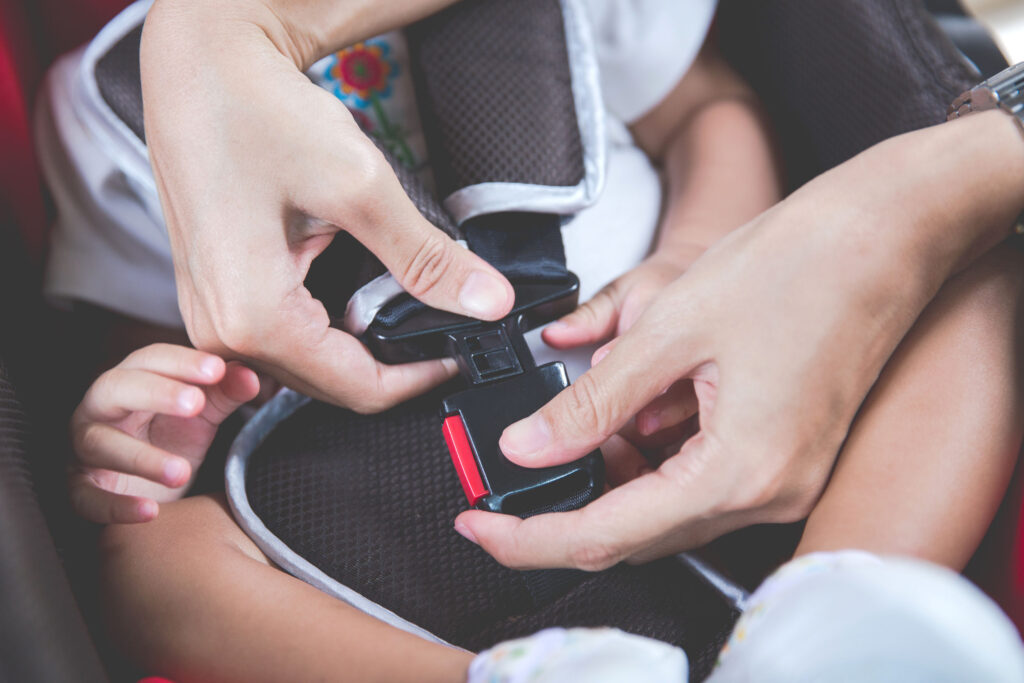
According to the Centers for Disease Control and Prevention (CDC), car accidents are among the leading causes of death and injury to children in the U.S. The good news is that many of these deaths and injuries are preventable—child safety seats can reduce the risk of death by 71%.
Since September is National Baby Safety Month, now is the perfect opportunity to brush up on vehicle safety for your little ones. Check out these car seat safety tips, brought to you by the Seattle personal injury lawyers at Lerner and Rowe Injury Attorneys.
Use a Rear-Facing Car Seat For As Long As Possible
According to the American Academy of Pediatrics, research indicates that rear-facing car seats are the best at reducing the risk of injury or death to children under the age of two in traffic accidents. In fact, earlier this year Washington car seat laws were amended to require that all children under the age of two be secured in a rear-facing car seat.
Although it is perfectly legal to transition your two-year-old into a forward-facing car seat, many experts recommend continuing to use a rear-facing car seat until your child reaches the highest weight or height allowed by the seat manufacturer. This is because in an accident, a rear-facing car seat will help spread the force of the crash more evenly across the back of the seat and your child’s body, resulting in a reduced likelihood of injury or death.
Use a Tether For Forward-Facing Car Seats
Every forward-facing car seat should use a tether to help keep the seat in place. Tethers are especially important in preventing head, neck, and spinal injuries in young children, as they seriously limit the amount of movement of the head in the event of a crash. Unfortunately, many parents aren’t using tethers correctly (or at all).
To appropriately utilize a tether, you’ll want to locate the lower anchors in your vehicle. (Note that cars manufactured prior to 2001 may not have lower anchors and may need to be retrofitted by a professional.) Then, connect the lower anchor attachments on the car seat to the lower anchors. After you have ensured that the straps are tight enough (the seat should not be able to move more than one inch side to side or back to front), connect the car seat tether to the tether anchor in your vehicle and tighten. Be sure to follow the instructions of the car seat manufacturer, as models vary.
Know When It’s Time to Change Car Seats

You should aim to use your current car seat for as long as possible—that is, until your child has reached the maximum height or weight limit specified by the manufacturer. Generally speaking, car seats have fewer and fewer safety features the larger they get, so it’s important to maximize the amount of time your child spends in the safest possible car seat for their size.
You’ll know your child is ready for a booster seat once they are able to sit in their seat without a harness and resist the urge to climb out of their seat. Until your child is ready for this (and until they have surpassed the maximum weight and height limit), keep them in an appropriately sized forward-facing car seat.
Bonus car seat safety tips: Always replace a car seat which is worn out, broken, or missing pieces, or if it has been in an accident (even a minor one). It is also recommended not to buy used car seats, since parents have no way of knowing if the car seat has been structurally weakened.
Teach Your Children Safe Driving Habits by Example
Before you know it, your little one will be getting their driving permit and heading out on the road. It’s no secret that children learn by watching their parents, so set a good example for your kids from an early age by always wearing a seat belt when you get behind the wheel or whenever you ride as a passenger. Avoid engaging in distracted driving behaviors like using your phone, don’t drive when you’re drowsy or fatigued, and never drive when you’re impaired by drugs or alcohol.
What To Do If Your Child Is Injured in a Car Accident
Unfortunately, following all these car seat safety tips can’t prevent all injuries. If your infant or child is injured in a Seattle car accident, whether because of another driver’s carelessness or a defective car seat, you have every right to pursue compensation for their injuries.
Lerner and Rowe Injury Attorneys is committed to helping victims after an accident. If you suspect the cause of your child’s injuries is related to a defective product or another motorist’s negligence, contact our law office today by calling (206) 333-4400. We’ll arrange a free consultation to discuss the details of your case and go over all the legal options available to you.
Contact a representative right now using LiveChat to answer additional questions you may have. You can also send us the details of your case using this form for a free case review. Time is of the essence after an accident, so contact us today.



